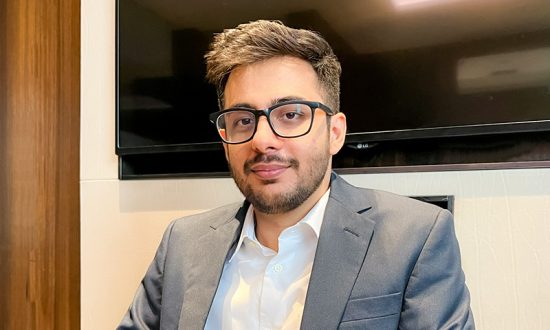Mr. Lavin Mirchandani is the Co-founder of ConnectEd Technologies, which is an edtech social enterprise that specializes in creating tailor-made technologies and deploying large-scale developmental programs that make quality education accessible to government schools and the children studying therein. For the company, he leads Content Development and Finance, which are two critical functions that lead any edtech enterprise towards a sustainable business model. In a situation where the edtech industry in India is plagued by companies that have raised immense capital to achieve scale, but remain largely unviable, Mr. Lavin Mirchandani has been able to leverage his past experience in the finance industry to build a commercially viable business model for the company from the first year of business itself.
When the Covid-19 pandemic first struck India in 2020, schools across the country were the first institutions to be ordered shut by the Central Government. While teachers and students associated with private schools soon migrated to an online format of teaching-learning, stakeholders relying on government schools suffered dearly. To ease pressure on school students and their parents, the Central Government ordered all State Boards to reduce the prescribed syllabus and relaxed examination guidelines. While this move offered relief to all school-related stakeholders, government authorities across all levels knew that this was a temporary solution to a problem that needed to be addressed sustainably.
Since stakeholders associated with private schools seemed to be meeting their academic goals effectively through online education, Central & State Governments across India started advising and equipping government schoolteachers to leverage WhatsApp and other such platforms to keep government school students engaged with educational material created by them. While this approach taken by government schoolteachers – along with the realization that private school students had already migrated to learning online – pushed several government school students to leverage computers, smartphones and internet connectivity to access education online; not all students had access to the required infrastructure.
As a result, by January 2021, nearly every State Government in India allowed physical lectures to be conducted in schools for students in Grade 9 and above, whilst following necessary Covid-safety norms. However, the joy of learning in-person, amidst the company of your peers, was rather short-lived as a new variant of the virus – named ‘Delta’ – caused a second wave of Covid-19; resulting in discontinuation of physical classes nationwide by April 2021. Once again, school-related stakeholders who had access to requisite devices and connectivity went back to teaching-learning online, whereas their less-fortunate counterparts were cut-off from education till India emerged from the second wave and started reopening schools.
By the time State Governments across India allowed schools to restart physical lectures across all Grades, it was December 2021 and a third variant of Covid-19 – named ‘Omicron’ – had just surfaced in African countries. As schools across the country took a break for their annual year-end holidays, there was a fresh surge in Covid-19 cases across, thanks to the emergence and rapid spread of the Omicron variant in India. In response, most State Governments declared school closures yet again, and in-person lectures only resumed during the period of February-March 2022; right before the annual year-end school examinations.
To ensure India’s school education system is protected from future waves by Covid-19, the Central Government initiated its vaccination drive for teenagers aged 15-18 in January 2022, followed by pre-teenagers aged 12-14 in March 2022. Once the annual, year-end exams for Academic Year 2021-22 conclude, the government is expected to start the process of inoculating children aged 5-12 in May 2022. It appears that the government is following a two-pronged approach to combat Covid-19. Under this approach, the government is vaccinating students on one side, whilst strengthening its online education capabilities by distributing devices, internet connectivity, and regional-language educational content.
There is no doubt that repeated disruption of conventional educational processes by Covid-19 has significantly impacted learning levels of school students across India, especially those relying on government schools. Independent studies by credible organizations such as Pratham and Oxfam have not only shown an erosion of learning levels, but also pointed to an extraordinary increase in students dropping-out of the education system. In such a situation, the government and its school education system face the mammoth task of ensuring out-of-school students resume their educational journeys, and learning levels of all students are improved to pre-pandemic standards – if not better.
This year’s summer holidays would’ve been a great time for the school education system to focus on increasing enrolment and reducing learning loss during Academic Year 2022-23, however, the recent spike in Covid-19 cases may pose a threat to any such attempts, if it grows into a full-blown fourth wave of the pandemic. Only time will tell, whether the recent spike in Covid-19 cases will flatten-out before turning into an actual wave, or if our education system will be jolted by yet another round of school closures. Irrespective of what happens, it is safe to say that our education system needs to now prepare to impart quality education through a blended approach relying on traditional brick-and-mortar setups and technology.
As someone whose organization has been creating Vernacular EdTech solutions for government school students for the last 6 years, I can say with great conviction that structural reforms made by the government during this pandemic will usher in an era of technology-enabled blended learning for India’s school education system. However, I hope government authorities implement these reforms swiftly, through strategic collaboration with private organizations working in this space, so the current crop of school students – which is suffering the most – can benefit as much as future generations.


